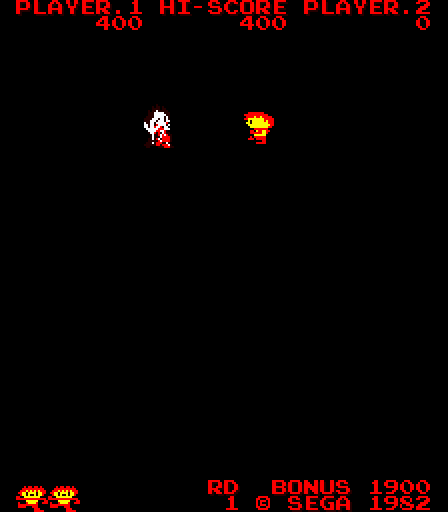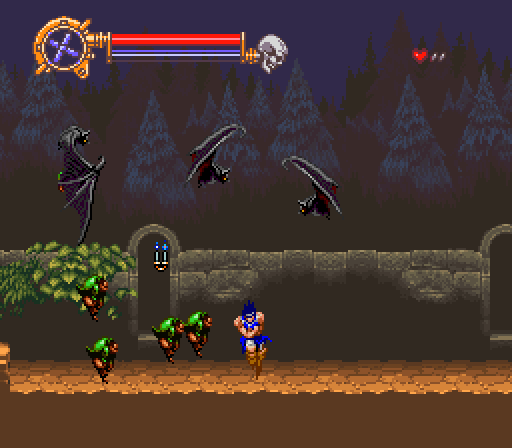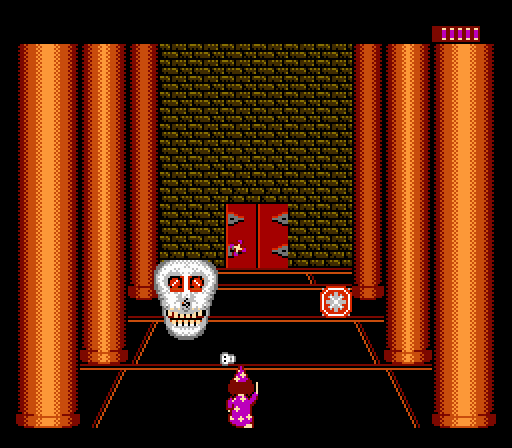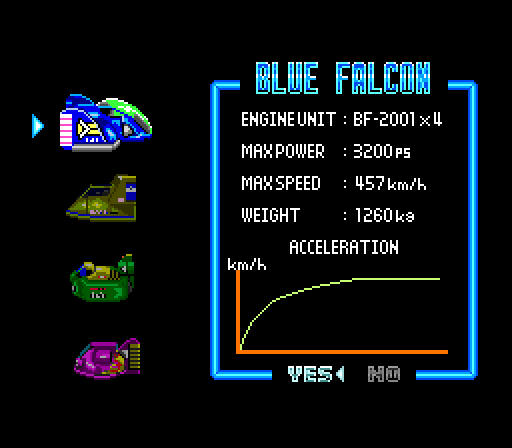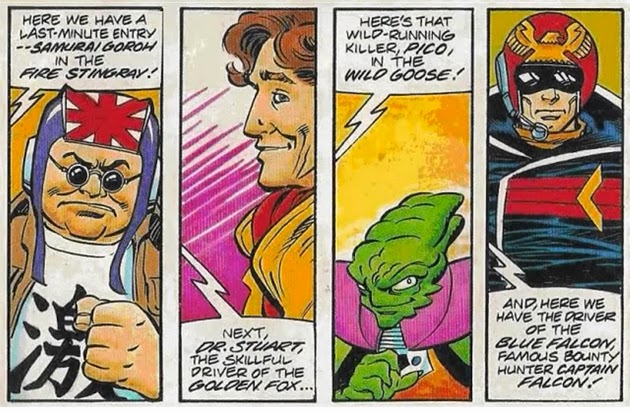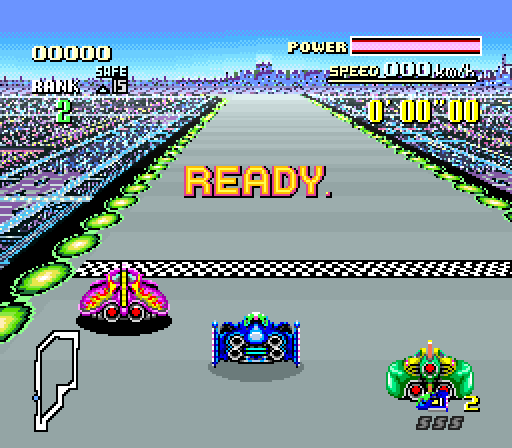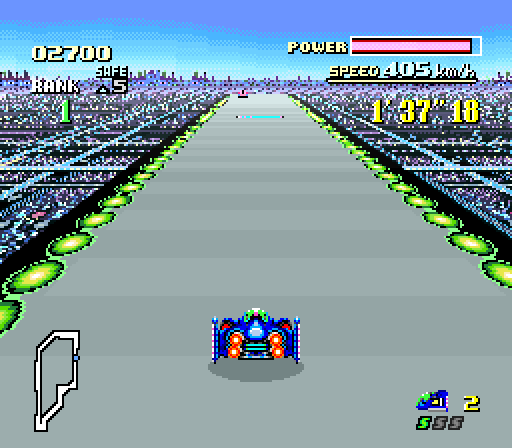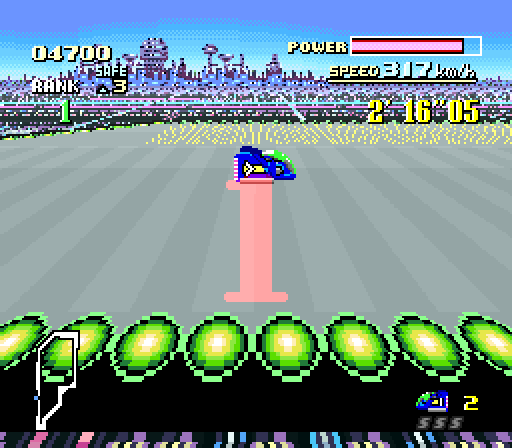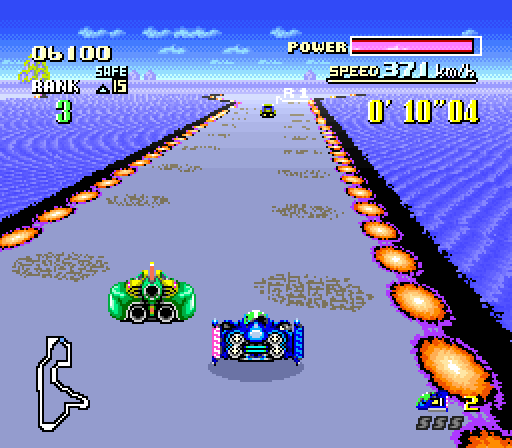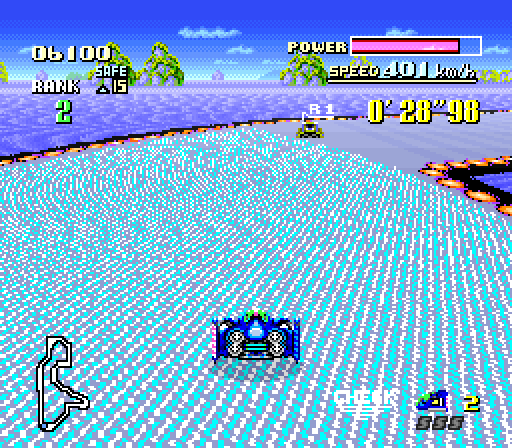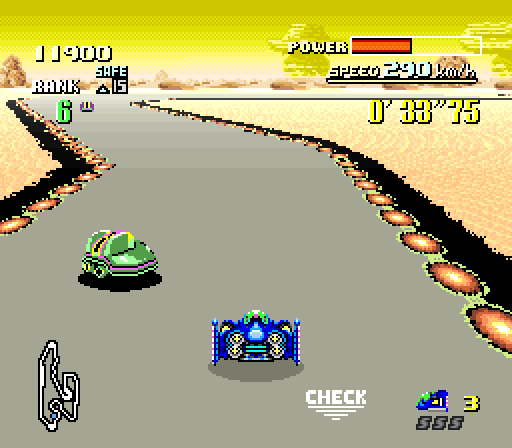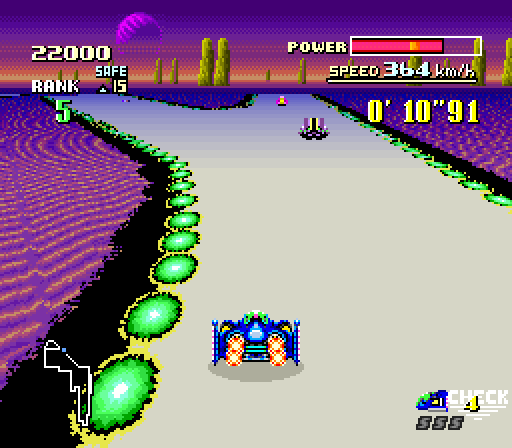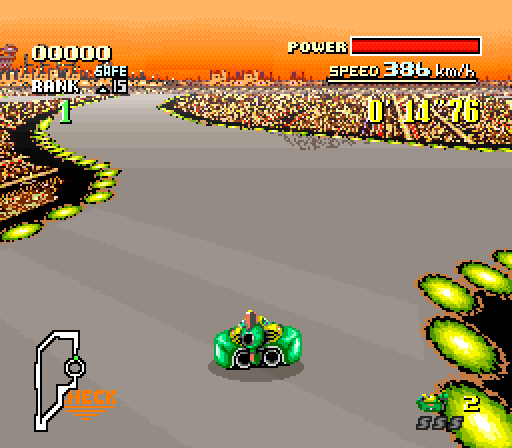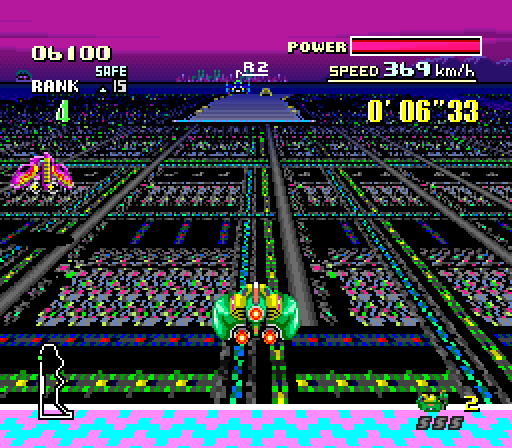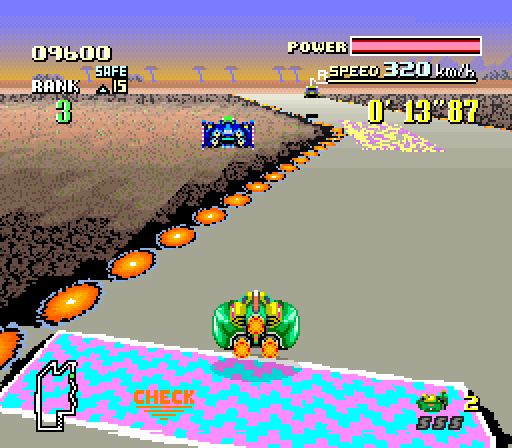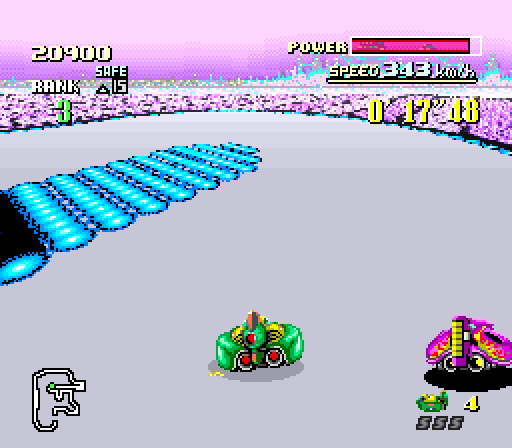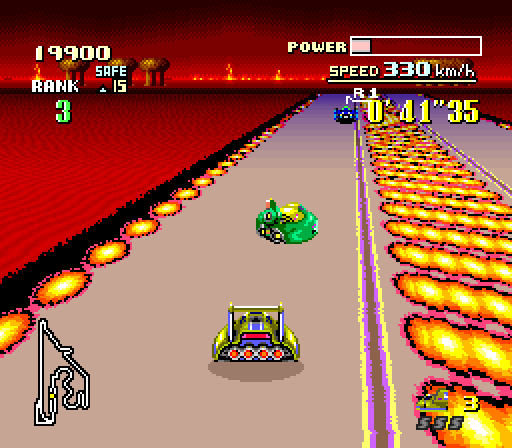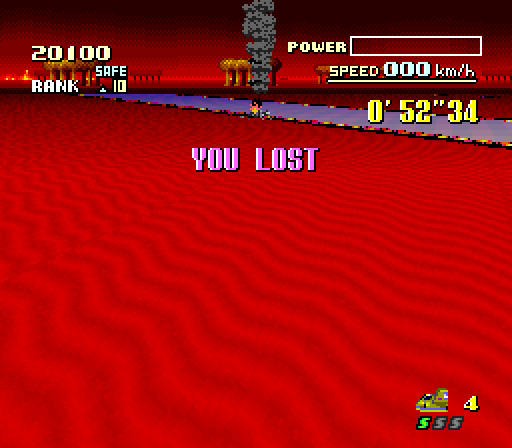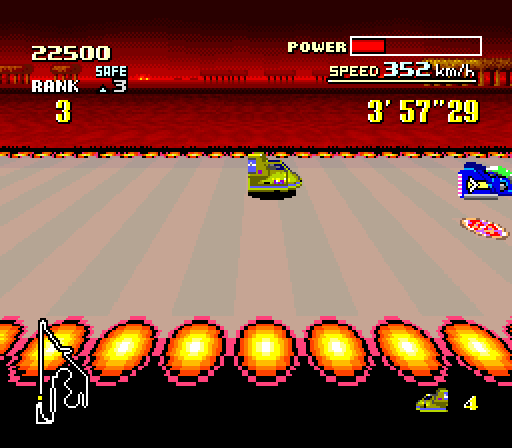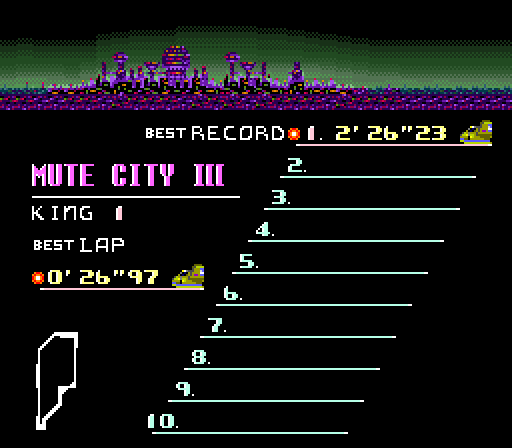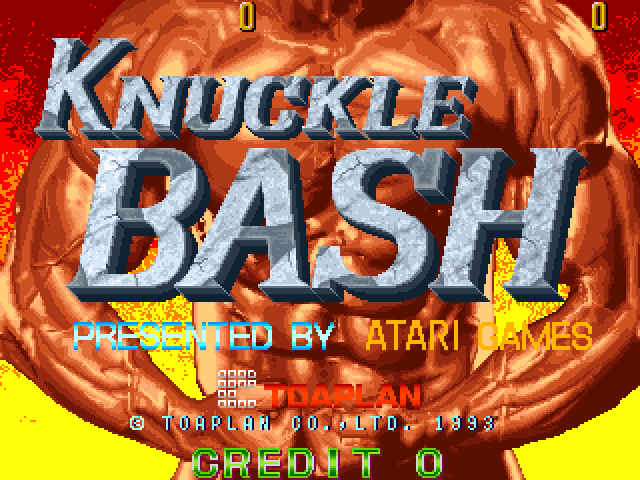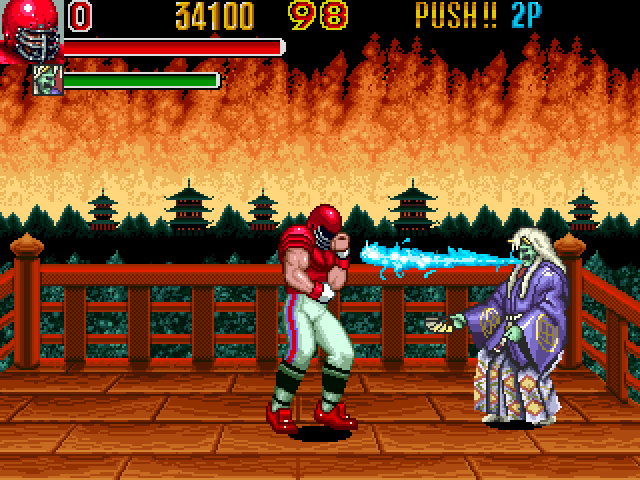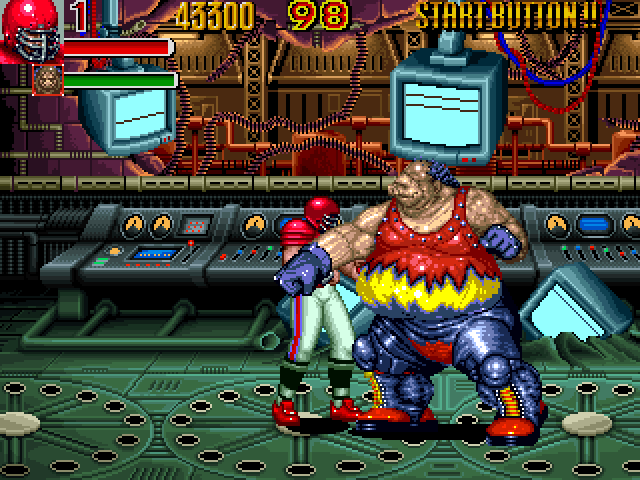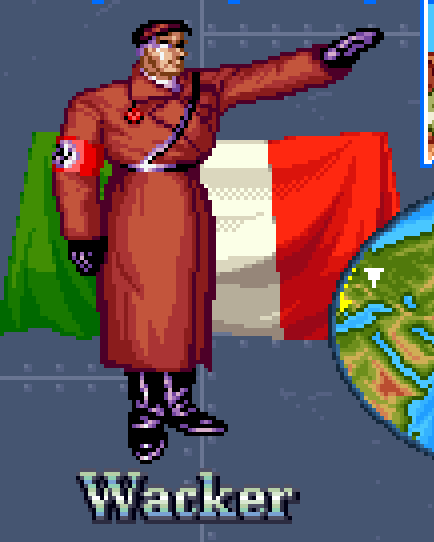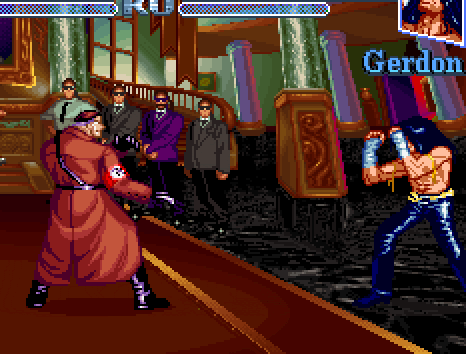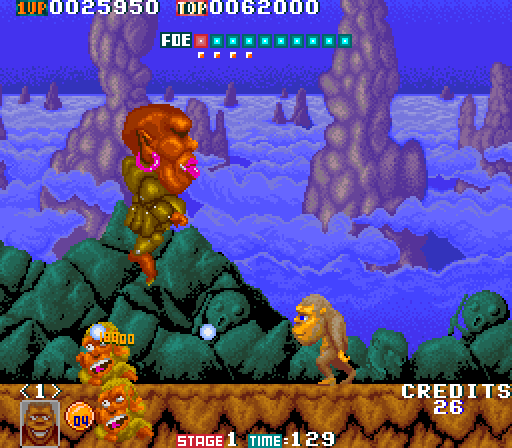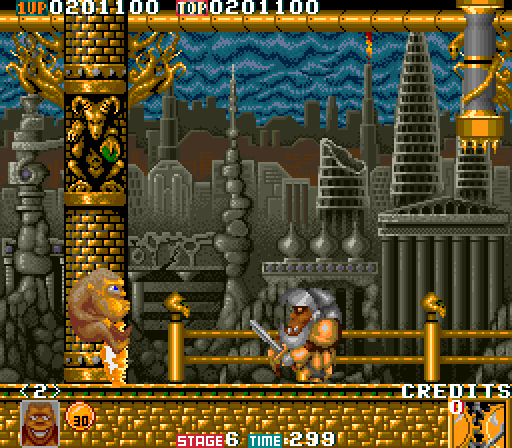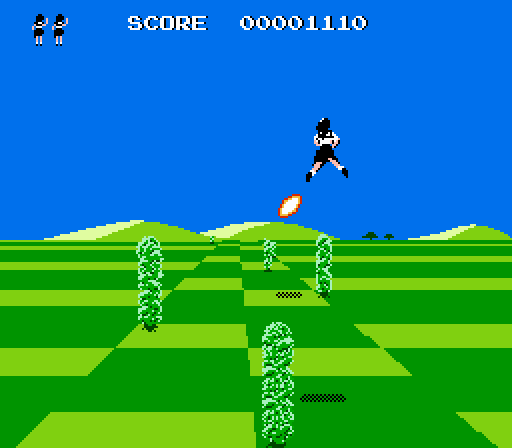Like a black cat whose tail drifted too close to the fire beneath a witch's cauldron, this October has flown past with uncanny speed, and Halloween is already upon us! Remember to eat sweets responsibly and if you are going to watch a horror movie make sure it's not a modern remake of something from the Seventies or Eighties. Before I return to the catacombs beneath VGJunk Towers with a stack of Hellraiser comics and fuzzy VHS copy of My Best Friend Is A Vampire, I've got one more entry in the 2014 Spooktacular for you: ripped from the annals of probably the most Halloween-y of all gaming franchises, it's Konami's 1995 SNES whip-em-up Castlevania: Dracula X!
![]()
I think I might have mentioned this before, but I've never been impressed with the name "Dracula X," especially when it's part of a logo like this with non-standard spacing. It's too easy to read it as "Draculax," the number one vampire laxative. Not to worry though, because this game has three titles so you can pick whichever one tickles your fancy. The original Japanese name is
Akumajou Dracula XX, while my favourite is the European title of
Castlevania: Vampire's Kiss.
I don't know why they changed the name, but I'd guess it was probably to avoid problems with an existing property of the same name. What I do know is that
Vampire's Kiss got a kickin' rad new logo ripped straight from the merchandise of a nonexistent Poison-eque glam-metal band. I just really like that logo, and I can't explain why. I also noticed that they went to the trouble of entirely redrawing the
Castlevania logo. The
Dracula X version was fine, guys, you're just making extra work for yourselves there.
As the intro fills us in on the usual
Castlevania story of Dracula rising from the grave and a member of the heroic Belmont family setting out to defeat the Lord of Darkness, it's time for a little background on the game itself. In 1993, Konami released
Dracula X : Chi no Rondo (
Castlevania: Rondo of Blood) for the PC Engine CD, the game that bridged the gap between the "classic"
Castlevania games and
Symphony of the Night, its direct sequel. It featured excellent graphics, superb music, and with alternate routes and people to rescue it injected a tiny bit more plot into the usual
Castlevania storylines of "kill Dracula" or, in
Castlevania II's case "bring Dracula back to life so you can kill him properly". It's widely considered to be one of the best (if not
the best) of the traditional
Castlevania games, so naturally it was never released outside Japan. To remedy this, Konami tried to shoehorn the CD-based
Rondo of Blood into a SNES cart, dropping features and rejigging stages, and the result was
Castlevania: Dracula X. This game gets a lot of flak as a result, but while you could never say it's as good as
Rondo of Blood it's still a good game in its own right.
The hero of
Dracula X is Richter Belmont, latest holder of the fabled Vampire Killer whip and Chief Evil-Slayer (Vampiric Overlord Division). He's out to kill Dracula, of course... but this time it's personal, because Dracula's minions have abducted Richter's girlfriend Annette and Annette's younger sister (and future playable character) Maria. Why has Dracula kidnapped these young women? Because he's a dick, that's why. Okay, in Maria's case he might have some diabolical plans for her because she has the magical ability to command animals like a Disney princess, but in Annette's case I think he's just trying to piss Richter off. Well, mission accomplished on that front, Drac - Richter is here to take you down, but first he's got to get through this village you set on fire.
Well, it's definitely a
Castlevania game: there's a man about to whip a skeleton in the face and everything. In term of controls, Richter is one step above his stiff-kneed progenitors from the NES
Castlevania games but he's nowhere near as versatile as the "Metroidvania" heroes or even Simon from
Super Castlevania IV. He can only whip straight forwards, for starters: no angled attacks or brandishing your whip and flopping it about in this one. Richter can perform a backflip of (let's be generous) limited usefulness by double-tapping jump, but aside from that it's mostly the same old
Castlevania action. You jump, you whip, you collect hearts that power your sub-weapons, sub-weapons that cover the usual spread of daggers that travel straight forwards, holy water that spreads along the ground, axes that you throw upwards in an arc, stopwatches that freeze time for a while and the boomerang that definitely isn't a cross despite hurting vampires and being a cross.
Also featured prominently are staircases made of diagonally-arranged blocks, because it just wouldn't be a
Castlevania game without them. The peasants of Transylvania are going to lose their minds the first time they see a spiral staircase.
So far, the first stage is exactly what you'd expect from a
Castlevania game - kill some monsters, damage some wall-mounted candles, enjoy the music - although it does feel both slightly easier and a little more... bare than you might expect. Then there's a brief area populated by Medusa Heads, the floating gorgon heads that have caused so many pit-based
Castlevania deaths, and it's hard not to take their appearance as the game saying "don't get too cocky, bucko. There'll be plenty more of these later".
Then suddenly you're being chased by an enormous bull-goat-thing, and on your first attempt this dramatic change of pace can be very disorientating. Unlike most
Castlevania games, the stages in
Dracula X aren't timed and in general the game lends itself to a more patient style of play, but now Richter has to get a move on and jump over these holes, holes that I found surprisingly difficult to get across due to the pressure of being chased by Satan's livestock and not yet quite having a handle on how far Richter can jump. On the plus side, I got a much clearer view of the lovely Mode 7 fire effect in the background. It's a fantastic visual, it really sets this stage apart from the more common
Castlevania bricks-n-crypts location and it also serves as a nice motivation to go and kill Dracula. In these earlier
Castlevanias it's rare that you actually see something evil Dracula has done - he mostly spends his time up in his tower, waiting for his latest whip enema - but this time he's razed a village full of innocent people, and you're going to be the one that makes him pay for it.
The fire's turned a spooky shade of blue, like a demonic British Gas advert, and that means it's time for the game's first boss fight. It's a duel to the death with Cerberus, which is appropriate given that he's the guardian to hell and all.
Cerberus fights in the manner of a playful puppy, albeit one that can vomit up fireballs, romping around the screen and trying to bump into Richter as you knock the devil dog back with your whip. It's a nice, simple introduction to the boss battles of the game, but that's no reason not to go hog-wild with the power that sets Richter aside from his Belmont ancestors - the Item Crash.
Pictured above: more flying crosses than an explosion at a seminary, all of them whirling around the screen and damaging the boss while Richter hovers, invincible, in the centre of the action. Pressing X activates the Item Crash, (assuming you have enough hearts,) a powerful technique summoned from whatever sub-weapon you're holding. If you've played
Symphony of the Night, you'll probably be familiar with Hydro Storm, the Holy Water's Item Crash. Sadly, in this game Richter does not shout "Hydro Storm!" whenever he uses it. Disappointing, I know, but the raw power of the cross' Item Crash crash is enough to both keep my spirits up and annihilate poor Cerberus. On to stage two, then.
The first part of stage two highlights Dracula's slapdash approach to property maintenance, as Richter must hop his way across the crumbling masonry of
Castlevania's front bridge while under constant attack from mermen. Just looking at this screenshot is aggravating, because I can see that I messed up - Richter's jump is going to carry him into that first merman, the knockback will send him plummeting to his doom and I must suffer the ignominy of a death at the flippers of a creature with all the intelligence of a ham sandwich. I know swimming around and bumping into the occasional vampire slayer doesn't require the most energetic of synapses, but just look at those gormless faces. They don't have a clue what's going on. It's a good job they have gills, they'd probably forget to breathe otherwise.
Now we're in the castle courtyard, where the reanimated skeleton of Donkey Kong tried to express his incoherent rage by throwing a barrel at Richter. I guess kidnapping Mario's girlfriend was a grave enough sin for him to be condemned to an eternity of servitude in a vampire's thrall.
![]()
This stage is also the first place that you meet the spear knights. They're knights with spears, and they know how to use those spears - with extreme aggression and wilful dickery, their misanthropy presumably brought about by being the only group of Dracula's minions that have to wear fuschia-and-blue armour recycled from 90's shell suits. They can block your sub-weapons by spinning their spears, they can attack with huge swings that send you flying across the level, and the second you lose concentration one of them will stab you from a higher platform. I hate the spear knights. If you play this game, you will hate the spear knights too. The good news? They appear in more stages than any other enemy in the game, unless you count bottomless pits at enemies.
![]()
Speaking of enemies, here's stage two's boss. It's... a bat. A very large bat, granted, and it has the unusual power to split into a flapping conga line of smaller bats when whipped, but on the whole it's difficult to get excited about a giant bat when I've already faced Cerberus and Behemoth the rampaging bull-goat. Okay, so I ran away from Behemoth, but I didn't have any choice. To beat the bat, whip its giant form as quickly as possible and then get ready to move to a safe spot when the small bats appear. Item Crashing will help, but I suspect you've figured that out already.
Stage three begins with a more vertical gameplay experience, as Richter platforms his way up a deep pit while being attacked from all sides by Medusa Heads, fire-breathing dragon skulls and gravity. This area provides a good example of what I meant when I said
Dracula X requires a more patient style of play - in the earlier
Castlevanias, the first and third games especially, there was a certain rhythm to the game that you naturally fell into as you played, with the stages being so perfectly crafted that the best way to clear them was to always be moving forwards. This isn't the case in a lot of
Dracula X's stages, where the lack of a time limit and non-regenerating enemies means that you can take more time planning your route and clearing the monsters away as safely as possible.
I admit I could have probably beaten these spear knights in the usual whip-centric manner, but summoning a deluge of unavoidable and unblockable holy water provides a level of personal satisfaction that cannot be matched. You can't stab rain, you insufferable bastards.
Here's a top
Castlevania tip for you: always take a moment to whip any dead ends you come across. Sometimes these walls crumble away to reveal items hidden inside, because Dracula apparently drank the blood of a squirrel at some point and it has forever altered his attitude to storage. I'd love to believe that smashing up the castle walls to find items is a piece of vampire-hunting knowledge that has been passed down from Belmont to Belmont over the ages, culminating in Richter's dad sitting his son on his knee and saying "now, make sure you bash open the plasterwork because Dracula is the kind of weirdo who hides cooked joints of meat in his crawlspaces."
I know he's the dark lord of all evil who holds dominion even over death itself, but
Dracula X's incarnation of Dracula seems like even more of a prick than usual, ordering his monster hordes to position themselves in the most infuriating places imaginable and doing away with the floor in large swathes of his castle. Those two things have come together in diabolical harmony during this section, where Richter must jump across these narrow pillars, where a single hit from an enemy will almost certainly make him fall. It was difficult, until I reached the part where Dracula (metaphorically) said "eat me, Belmont" and had a floor-to-ceiling column of undead dragon skulls installed to block Richter's path. Now you're just being childish, Vlad.
This would be a good time to bring up a facet of
Dracula X's gameplay that wasn't a huge part of the earlier games, and that's conserving hearts. Your Item Crash attack is so useful against bosses that you'll want to have as many hearts as possible saved up to use in the end-of-stage battles, which means you end up having internal debates about whether to use them in the stages themselves, which adds a fun little balancing act into the game.
![]()
On the other side of the columns, I found a key. A mysterious and very important key that Richter needs to hang on to, which is unfortunate because it replaces your sub-weapon. That's right, no more ranged attacks - you can see I've reluctantly chucked the cross I was previously using on the ground - and no more Item Crashes. All right, so that's not strictly true: you can still use the Item Crash when you have the key, and in a rather wonderful little touch Richter flies up into the air like usual... but nothing happens, and he falls back down as a question mark appears over his head. However, this isn't as useless as it first seems, because the key's Item Crash costs no hearts to use and you're still temporarily invincible when you activate it. It's not a sure-fire method of survival by any means, but there were a few occasions when I managed to avoid taking damage by jumping into the air with a key in my hand and bellowing like a maniac, and very satisfying it was too. When life gives you lemons, make lemonade, that's the Belmont family motto, and also how they support themselves financially during the many years that Dracula isn't active.
![]()
Key powers, don't fail me now! This stage's boss is Dullahan, the headless knight familiar from a great many videogames, and he's attacking by making rocks fall from the ceiling and thus further reinforcing my feeling that I'd die fifty percent less in
Castlevania games if Dracula would just get a builder in to take a look at his brickwork, maybe get a bit of repointing done or something.
This fight's mostly about getting your distances right - Richter's whip has just enough reach to hurt the boss if you stand at the tip of his lance, so you need to get your hit in and then retreat to a safe distance before Dullahan shoots icicles along the ground at you or goes down the old-fashioned route of stabbing you with his lance.
![]()
Stage four takes place deep underground, starting with the subterranean jail where Dracula has imprisoned... who, exactly? None of the possible answers I can come up with are particularly satisfying - they're either human captives, in which case Richter has completely ignored their suffering and left them to rot while knowing full well that Castlevania has a tendency to collapse or explode when Dracula is defeated, or they're monsters. Why would Dracula imprison monsters? He'd either have them out there on Belmont-fighting duty, or he would have them killed because I can't imagine there are any crimes against Dracula for which the punishment is not immediate execution. Eventually I settled on a different explanation: these cells are purely for decoration, for ambience. As the Prince of Darkness, Dracula has certain standards to uphold, and you have to have the tortured moans of the living reach a certain decibel level before you can get the vampire version of a Michelin star.
![]()
While riding around on this ore-hauling pulley system - Dracula's fabulous wealth comes from his large-scale mining operations, it seems - I noticed a door. I still have the key, which is something of a miracle in itself because if you lose a life,
you lose the key, the mysteries of what's behind this door forever hidden from you unless you go back and fetch it because this is a game dripping with contempt for the player. Well, screw you,
Dracula X; I managed to hang on to the key and now I'm going to open that door.
Oh look, Dracula
does have some human captives after all - it's Maria, the younger sister of Richter's girlfriend Annette. Maria later grows up to appear in
Symphony of the Night, where she enters Castlevania once again to search for Richter, who has been brainwashed by Dracula and has gained the power of
super-awesome voice acting in the process. Richter learns from Maria that Annette is being held somewhere else in the castle, and that's all he needs to hear - once he's learned that titbit he's straight back out the door to resume his mission, taking the valiant and heroic decision to leave the little girl behind in the depths of the most evil place in all the world. Good work, Richter. I was having trouble fighting off the kamikaze ghosts that congregate around Maria's cell and I'm playing as a trained vanquisher of the undead, but I'm sure the pre-teen who has already been kidnapped by Dracula's minions once will have no trouble escaping from this trap-filled, monster-infested, labyrinthine castle.
After "rescuing" Maria, I made my way through a short section of cave before I reached another door, and that door led to the next stage. No boss to fight or anything! I mean, I'm terrible at
Castlevania, but even I couldn't classify "unlocking a door" as a boss fight. So, the key finally proves its worth - it meant there was one less boss for me to get my backside kicked by, and in a very, very distant second place it allowed me to free Maria. Well, onward to stage 5, then. Sorry, stage 5'. Hmm...
It's a little-known fact that Dracula's castle was built directly on top of the ruins of Atlantis. I know the land-locked nature of Transylvania might make that fact seem like bullshit, but look at this unassailable archaeological evidence. What are you, some kind of
science-denier? You disgust me.
One of Richter's most famous character traits is his boundless, child-like curiosity, and having him whip any part of the stage that looked even slightly out-of-place paid off when destroying this leak caused the water to drain away, giving me access to the area below. I am unjustifiably pleased with myself for figuring this out. I didn't even need to look at a guide. My parents are very proud.
Waiting below (and looking surprisingly dry, considering) is Annette. "Richter, my love!" she says "you're great and everything, but Dracula grows more powerful by the moment so forget about me and get a shift on!" I may have paraphrased that slightly, but the main point still stands: Richter has rescued the two hostages and now he can make a beeline straight for Dracula. I do hope he's in his throne room, because that's where Richer is heading, but I've already seen that Konami really have it out for the player in this particular
Castlevania adventure so I wouldn't be too shocked if Dracula was actually sitting in a bar in the next village, using his evil powers to clairvoyantly spy on Richter as he bumbles aimlessly around the castle.
The boss of this watery stage is an appropriately aquatic sea monster with a body made of several pieces so loosely connected that I wonder whether they've had a falling out recently and they're only grudgingly hanging around together because Richter showed up. If that's the case, they show an admirable amount of professionalism in kicking my arse, and aside from the final battle this is by far the boss I had the most trouble with. It's fast, it covers a lot of the screen and worst of all I could never quite seem to whip it in the head - this is the point in the game when I really started missing
Super Castlevania IV's multi-directional whip. It's still an enjoyable fight, though, with lots of delicate footwork required and a good feeling of tension. On my first time through, me and Nessie here were locked in a mortal struggle, the result balanced on a knife-edge until I finally managed to land the killing blow with a mere sliver of my own health bar remaining. Then the boss flew up into the air as a tornado and killed me after it had died. Oh, didn't I mention that all the bosses in this game have one final attack that they pull out once you've depleted their health in an effort to catch you off guard? Because they do, and with this twist
Dracula X goes from "hard" to "mean" in my book. It's the difference between a strict but ultimately well-meaning sports coach and that big kid from the estate who gobs in your hair every time he sees you because his parents don't love him.
Stage six is the traditional
Castlevania clock tower stage, the usual mix of Medusa Heads and jumping between platforms made from moving gears. There is a hell of a lot of clockwork in this tower, far more than a single clock needs. His pride would never allow him to admit it, but Dracula has clearly fallen prey to some cowboy builders here, a bunch of scammers who took advantage of his post-coffin-nap befuddlement as though he was the kind of elderly grandmother you hear about on
Watchdog. "Oh, yeah, you've got to have six storeys packed with nothing but machinery. Sorry, pal, but that's just how these things work. I know it's not cheap, but can you really put a price on the peace of mind that comes from always knowing what time it is? You're a vampire, you can't afford to be caught out by the sunrise. Now, if you just sign here, we can get to work."
Lurking at the top of the clock tower is Death, both the anthropomorphic personification of man's inescapable mortality and the state of losing all your health and dying. I've never really thought about it before, but I suppose it makes sense that Death's generally found near the clock tower, what with him being the Ultimate Timekeeper and all.
As ever, Death's favourite party trick is to summon flying sickles to do most of his soul-reaping for him, the lazy git, but he also flies into Richter every now and then and his mere touch causes Richter to become cursed. More cursed that having to fight his way through Dracula's castle every few days, I mean - he moves around really slowly, not a helpful state when you're trying to avoid the previously-mentioned sickle blizzard. Still, I had a much easier time than I anticipated, but this being Death he has a nasty trick up his voluminous sleeve.
![]()
With one health bar whipped away, Death drops to the ground and switches to what I've come to think of as his kung-fu mode, moving faster, rolling around in the form of a difficult-to-avoid scythe ball and enjoying the advantage given to him by the long reach of his weapon. Honestly, if I was still holding the key it could have been a real problem, but I wasn't. I had the cross, I had the hearts, I had a victory through the power of the Item Crash that might have felt a little cheap if I hadn't been fighting, you know, Death himself. Alternate names for Death include Mr. Sickles or Dracula's Bitch, but not to his face.
![]()
The final stage isn't much of a stage at all, a shorter-than-usual set of rooms that starts with the glorious image of Richter climbing the stairs to Dracula's sanctum with the castle in the distance below him and ends with this annoying section where spear knights poke at you while you try to ride these floating platforms and collect plenty of hearts for the final encounter. You can see Richter is crouching in the screenshot above, and crouching can play a major part in a successful trip through
Dracula X because if you're crouching when you get hit you
aren't knocked back. Quick switches to a ducking stance saved me many times on my various playthroughs of this game - sure I took damage, but as we all know Dracula likes to stash food in his drywall and it beats the instant death of falling down a hole.
Now, Dracula is waiting just beyond this area, but before Richter faces him it's time for me to rewind a little and show you what could have been, because
Dracula X has a few alternate paths through the game. Remember back in stage three, when Richter had to jump from pillar to pillar and break through the walls of dragon skulls that blocked his path? Well, if you're not the super-genius videogame expert that I am, you might have fallen off those pillars, only to find that the fall isn't fatal and instead it leads to an alternate stage four.
This slightly generic cave stage is probably the least interesting area in the game, but that's your punishment for not making it across those pillars. I'm not saying it's bad, though - it's still a fun area, as almost all of
Dracula X is, with the addition of movement-slowing slime pits and pleasingly gloopy mud-men to contend with. The slime pits also get a gold star for being the only part of the game where I got any use out of the backflip move. It would have been a damn shame if I'd gone through the whole adventure without getting to use a manoeuvre that cool. Used it in a
practical way, I mean. I used it a ton in the first couple of stages, but I had to stop because constantly backflipping into skeletons wasn't getting me very far.
No stage in this game can be disappointing anyway, not when you hear the music: the
Castlevania series is renowned for its excellent soundtracks, and this one is no exception. It's up there with the very best action game soundtrack the SNES has to offer, with the only disappointment being that both versions of stage 4 share the same track, but that's a minor quibble when it's as good as "Cemetery":
I love that pounding bass drum paired with the slightly twitchy strings. That's what a stress-induced heart attack should sound like, which is appropriate because I think this game is literally trying to kill me.
Dracula X also contains one of my very favourite versions of the
Castlevania classic "Bloody Tears." That's really saying something, because there are more versions of Bloody Tears that most bands have unique songs and while I can't honestly say I've listened to every single one that is certainly not for lack of trying.
The boss of this alternate stage four is the the evil priest who brought Dracula back to life, and his name is Shaft. Yes, Shaft. If your response to hearing this name is juvenile sniggering or immediately singing Isaac Hayes' classic movie theme then congratulations, you're a human being.
Shaft is a bit like Death, and not just because they buy their clothes at the same tailor - he can curse Richter by touching him, and he also has two different forms, although they're pretty similar. Shaft the First summons skeleton minions that you can completely ignore by sticking to the raised platforms, while Shaft the Second attacks by gathering up a ring of tombstones to flatten Richter with, perhaps in an attempt to kill him through sheer irony. Shaft was another boss that managed to kill me after he died, thanks to his ability to explode upon breathing his last like a suicide bomber fuelled by pure spite.
This is the other stage five, and it's got Flea Men. Lots and lots of Flea Men, deposited on your path (or on your head, if you're unlucky) by a squadron of highly-trained bats. Not as good as the evil geese that some Flea Men ride in
Symphony of the Night, but still an impressive display of Dracula's innate abilities as an animal trainer.
There's also this area that looks like the inside of a cruise ship. Castlevania is decorated to what an estate agent would call an eclectic taste, but I'm more interested in these sword-wielding knights. I'm very familiar with them from, yes,
Symphony of the Night, because a ton of sprites from
Dracula X / Rondo of Blood were recycled for that game. The problem was that I couldn't get out of the
Symphony mindset when I was fighting them, which led to me standing too close to them and them trying to use the backdash move when they attacked. Richter cannot backdash. He can't forward dash, for that matter, He's an unhurried sort of guy, as Belmonts tend to be, but that didn't help me when Sir Chopsalot and his ridiculously oversized shoulder pads were cleaving me in twain.
Here's a suitably Halloween-y boss - it's a werewolf, and he knows kung-fu. I have noticed that werewolves possessing martial arts skills is something of a theme in Japanese games - this werewolf, the wolf mode in
Altered Beast and Talbain from
Darkstalkers all spring to mind, and I have no idea why this would be besides the tenuous link between the graceful savagery of a wolf and the graceful savagery of a kung fu movie.
This boss is certainly graceful, bounding around the screen like, well, a dog, except a dog that's trying to kick your face off. My strategy for victory was to run away like a coward until the werewolf tried his extremely short-ranged punch combo and then whip him a few times. It worked out okay.
When defeated, the werewolf returns to his human form. Is it just me, or does he look really pleased about it? There's definitely some joy in his expression, probably because he has yet to realise that he's naked and his body looks like a wad of half-chewed beef jerky.
That's the alternate stages covered - but wait, there's more! If you go left at the end of stage four instead of heading through the second door, towards Annette, you'll come face-to-face with this minotaur. Face-to-groin, anyway, he's a big lad. His most dangerous attack is throwing a handful of rocks at Richter, but the way he does it makes it seem like the minotaur is going for the old "throw sand in their eyes" trick and he forgot that Richter isn't twelve feet tall and unnaturally muscular.
![]()
There's even a second boss for stage six - if you didn't rescue both Maria and Annette, which you won't have unless you managed to keep hold of the key and took that specific route, then Death is replaced by Carmilla, a vampire who flies around on a huge skull that shoots its eyeballs at you, making it objectively the coolest thing in the game and taking top spot on the list of things I would consider getting tattooed onto my tender, delicate skin. I'd get it inked on the palm of my hand so that whenever I was feeling down I could simply uncurl my fist and be instantly reinvigorated by gazing into those big googly eyes.
On an unrelated note, I've found that every time I see a clock in a videogame now I subconsciously check to see whether the designers drew it with "IV" or "IIII" for the number four. That's enough nonsense about clock face aesthetics, though - whichever route you take through
Dracula X, you will eventually have to take on Dracula himself, and here he is!
Good ol' predictable Dracula. Like Medusa Heads being annoying and the music being fantastic, Dracula's first attack pattern is a
Castlevania staple, and
Dracula X is no different: Dracula teleports to a location, launches fireballs from inside his cape like pyromaniacal stage magician, and then disappears in a cloud of smoke, repeating the process until either the player is dead or he's been whipped enough times to drain his health bar. Only Dracula's head is vulnerable, and even then only during the short spell when he's fully materialised.
Dracula X brings its own unique twist to this formula, and Dracula's final "fuck you" to the player is to remove most of the floor, forcing you to fight him atop a series of small pillars. This is an alarmingly effective piece of strategy from Dracula, hinting at a frankly terrifying future for the Belmont clan in which their sworn enemy knows what the hell he's doing in term of castle defence, and it turns this battle into an extremely tense affair where the slightest mistake, one mis-timed jump or undodged fireball, will mean immediate death. On your side are the game's tight and consistent controls, so if you mess it up you have no-one to blame but yourself. This form of Dracula isn't as deadly as it seems at first - it's still very difficult, definitely fluttering around the line between challenging and frustrating, but with patience and practise you can make it through without tearing too much of your hair out.
![]()
Then Dracula transforms into a giant blue devil. It's a shame he had to ruin the lovely purple tuxedo he was wearing earlier to accommodate this change, isn't it? That suit can't have been cheap, you can't just buy formal trousers with an 80 inch leg at Primark.
Anyway, Satancula. He's big, and that's his primary weapon. He takes up so much space that it's hard to keep away from him, but even more effective is his psychological mass: once he transforms, you know he's going to be much more of a challenge than he was before, and you get scared of him. You panic, you fluff a jump and bang, that's it. Even once you've gotten over that, this is still a ridiculously difficult fight full of big projectiles and beefy devil collisions which, if I'm perfectly honest, ruins the end of the game a little for me. It doesn't feel fair, which means it doesn't feel interesting, especially because the only way I managed to defeat Dracula was to make sure I had plenty of hearts and just use Item Crashes over and over again, and that method is just a bit boring.
Oh well; whatever means he used, Richter has sent Dracula back into temporary hibernation - I mentioned this in
the original Castlevania article, but the "Killer" part of the Vampire Killer's name is woefully inaccurate - and he even saved the kidnapped women. Now all he has to do to finish the game is collect the final orb that the boss dropped. It's on a different pillar, making this one of the most nerve-wracking jumps I've ever had to make in a videogame. Can you imagine if you beat Dracula and then fell down the hole? Can you imagine if you did that and
it was your last life? It doesn't bear thinking about, although
Dracula X generously provides a password system so at least you wouldn't have to start the whole game again.
Richter gave Dracula time to dress himself and fix his hair before the ending cutscene. How chivalrous of him. The ending also reveals that Dracula is still insisting on his throne being right next to the huge windows that let in the very first rays of the morning sun, which is like you or I decorating our bedroom with a large vat of sulphuric acid that dumps its contents into the room once a day.
Richter and Annette embrace as Maria peeks at them from between her fingers and what the
hell is going on with Maria's hair? She looks like her head's being shoved through Ferrero Rocher wrapper, or she's dressed up a a mechanical sunflower. Very odd. This picture changes to reflect whether you saved Maria or Annette - if you rescue neither of them, you get a shot of Richter riding back to the village on his horse. I'd stick with the horse, Richter. At least Dracula's not going to kidnap it. As this picture's your only reward for saving both girls you might feel less inclined to bother, but don't forget that you won't get to fight Death if you don't, and really, what's the point of a
Castlevania game if you don't get to kick Death right in his bonebag?
With that final thought,
Castlevania: Dracula X is over and yes, it is an inferior, cut-down version of
Rondo of Blood but that is almost irrelevant. It was certainly irrelevant at the time of the game's original release, when the idea of me owning a PC Engine CD and a £200 game was completely laughable, and it's still irrelevant now because it's a
good game. It looks great, it sounds great and it plays great, and most of all it has a deep, dense feeling of
Castlevania-ness attached to it. Before this, the
Castlevania games I had been playing recently were the later, Metroidvania-style offerings and you can certainly make an argument that those games are somewhat divorced from their forebears, but
Dracula X is classic
Castlevania through-and-through. It can be ferociously difficult, it definitely makes no effort to give the player a gentle ride, but for precision action gameplay with a wonderful atmosphere it's definitely recommended. The final boss isn't much fun and there are a few too many spear knights, but those are minor quibbles: Halloween and
Castlevania go together perfectly, so if you're looking for a seasonal game to play tonight then give D
racula X the love it deserves.
It's a ten out of ten on this year's final VGJunk Halloween-O-Meter rating, and of course it is -
Castlevania games are essentially the benchmark by which I set the ten-out-of-ten rating in the first place, so much so that I can forgive them for containing zero pumpkins. I fought the grim reaper, a necromancer threw gravestones at me, there was organ music and the whole thing took place in Transylvania: if I can't give that ten out of ten, then what
can I?
Sadly, that's the end of the 2014 VGJunk Halloween Spectacular, but it's been a good one! I hope you enjoyed reading it as much as I did writing it, and thank you for reading in the first place. Normal service will be resumed soon, and the Spooktacular will return for the 2015 Halloween season. It's only eleven months away. I can't wait.







